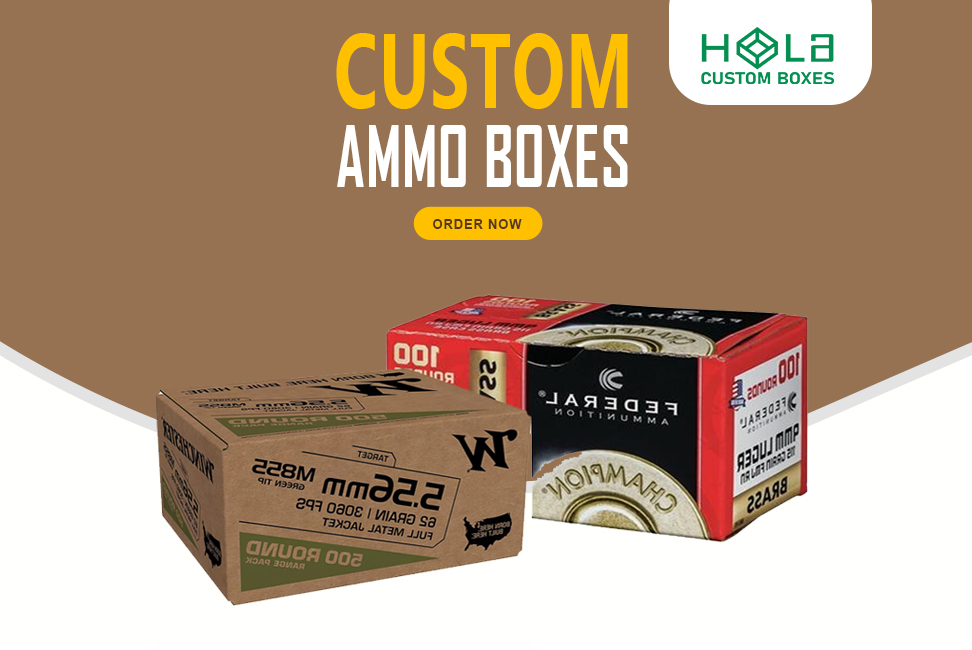11 Key Fire Regulations for Cardboard Ammo Boxes
2025-09-02 15:48:15
In the realm of cardboard ammo boxes, fire regulations are the guardians of safety and security. Just as a vigilant sentry stands watch, these eleven key regulations ensure that the flames of potential danger are extinguished.
From storage requirements to flammability standards, this article delves into the essential guidelines that govern the protection of cardboard ammo boxes.
So, join us as we unravel the intricacies of these regulations, empowering you with the knowledge to safeguard your ammunition with confidence.
Key Takeaways
- Store cardboard ammo boxes in cool and dry areas, away from potential sources of ignition.
- Use fire-resistant materials in the construction of the boxes and consider flame-retardant coatings or additives.
- Follow proper handling procedures to avoid damage and ensure the integrity of the boxes is not compromised.
- Ensure compliance with flammability standards, proper labeling, and ventilation guidelines to prevent fire risk and ensure safety during storage and transportation.
Fire Codes for Cardboard Ammo Boxes
Fire codes for cardboard ammo boxes are a set of regulations that govern the safe storage and handling of these containers to prevent fire hazards. These codes aim to ensure the protection of both individuals and property by implementing fire prevention methods and the use of fire-resistant materials.
To prevent fire incidents, fire prevention methods such as proper storage and handling procedures are crucial. Cardboard ammo boxes should be stored in cool and dry areas, away from any potential sources of ignition. Additionally, they should be kept in a well-ventilated space to minimize the risk of heat build-up.
Furthermore, the use of fire-resistant materials in the construction of cardboard ammo boxes is essential. These materials, such as flame-retardant coatings or additives, can significantly reduce the spread and intensity of fires. They act as a barrier, preventing the ignition and combustion of the cardboard material.
Storage Requirements for Cardboard Ammo Boxes
To ensure compliance with fire regulations, proper storage requirements must be followed for cardboard ammo boxes. Fire prevention measures are crucial in maintaining the safety and security of ammunition storage areas.
When storing cardboard ammo boxes, it is important to keep them in a cool, dry place away from any potential sources of ignition. These boxes should be stored in a well-ventilated area to prevent the accumulation of heat and moisture, which can lead to the degradation of the cardboard material.
Additionally, proper handling procedures should be observed when moving or stacking the boxes to prevent any damage that could compromise their integrity.
Looking for durable and customizable cardboard ammo boxes that reflect your brand’s identity and meet industry standards? Explore our full range of USA-made solutions at Hola Custom Boxes:
https://holacustomboxes.com/product/cardboard-ammo-box-manufacturer
Flammability Standards for Cardboard Ammo Boxes
Cardboard ammo boxes must meet specific flammability standards to ensure their safe storage and transportation. Fire resistance is a critical factor in determining the suitability of these boxes for containing ammunition. To comply with flammability standards, manufacturers subject the cardboard boxes to rigorous testing procedures.
These procedures evaluate the ability of the boxes to resist catching fire and spreading flames. The testing typically involves exposing the boxes to a controlled source of heat or an open flame, and measuring their resistance to ignition, flame spread, and heat release. These tests help to determine the fire safety performance of the cardboard ammo boxes and ensure that they meet the necessary standards for protecting their contents and preventing the risk of fire.
With the flammability standards in place, it is important to also consider ventilation guidelines for cardboard ammo boxes.
Ventilation Guidelines for Cardboard Ammo Boxes
After addressing the flammability standards, it is crucial to consider the importance of ventilation guidelines for ensuring the safe storage and transportation of cardboard ammo boxes.
Adequate ventilation is essential to prevent the build-up of heat and moisture inside the boxes, which can lead to the degradation of ammunition and pose a serious safety risk. Ventilation requirements must be met to maintain proper air circulation and temperature control within the boxes.
This helps to prevent the accumulation of moisture, which can cause damage to the ammunition and compromise its performance. Additionally, proper ventilation aids in the prevention of condensation, which can lead to the growth of mold and mildew.
Interactive Packaging for a Memorable Unboxing
A truly unforgettable unboxing experience comes from more than just the product itself—it’s about how it’s revealed. Interactive packaging can transform a simple box into an engaging experience. Imagine opening a custom action figure package with hidden compartments, surprise accessories, or unique reveals built into the design. This interactive element not only protects the figure but also builds excitement, anticipation, and joy, making the unboxing moment one that collectors will remember and cherish.
Limited Edition Packaging to Elevate Value
Limited edition packaging adds exclusivity and collectibility to action figures. With specially designed boxes featuring unique artwork, premium finishes, or rare design elements, collectors instantly feel that they own something extraordinary. This thoughtful presentation increases the perceived value of the item and makes the unboxing feel personal and special. When extra effort is put into packaging, it elevates the entire experience, turning an action figure into a treasured collectible without compromising its authenticity or integrity.
Safety Measures for Cardboard Ammo Boxes
To ensure compliance with fire safety standards, it is imperative to implement appropriate safety measures when handling cardboard ammo boxes. Fire prevention should be a top priority, and there are several handling precautions that should be followed to minimize the risk of fire incidents.
Firstly, it is crucial to store cardboard boxes for ammo in a cool, dry place away from any heat sources or open flames. Additionally, it is important to avoid stacking the boxes too high to prevent them from toppling over and causing damage or igniting nearby materials.
Furthermore, regular inspections should be conducted to check for any signs of damage or deterioration that could compromise the fire resistance of the boxes.
Ready to Upgrade Your Ammo Packaging?
